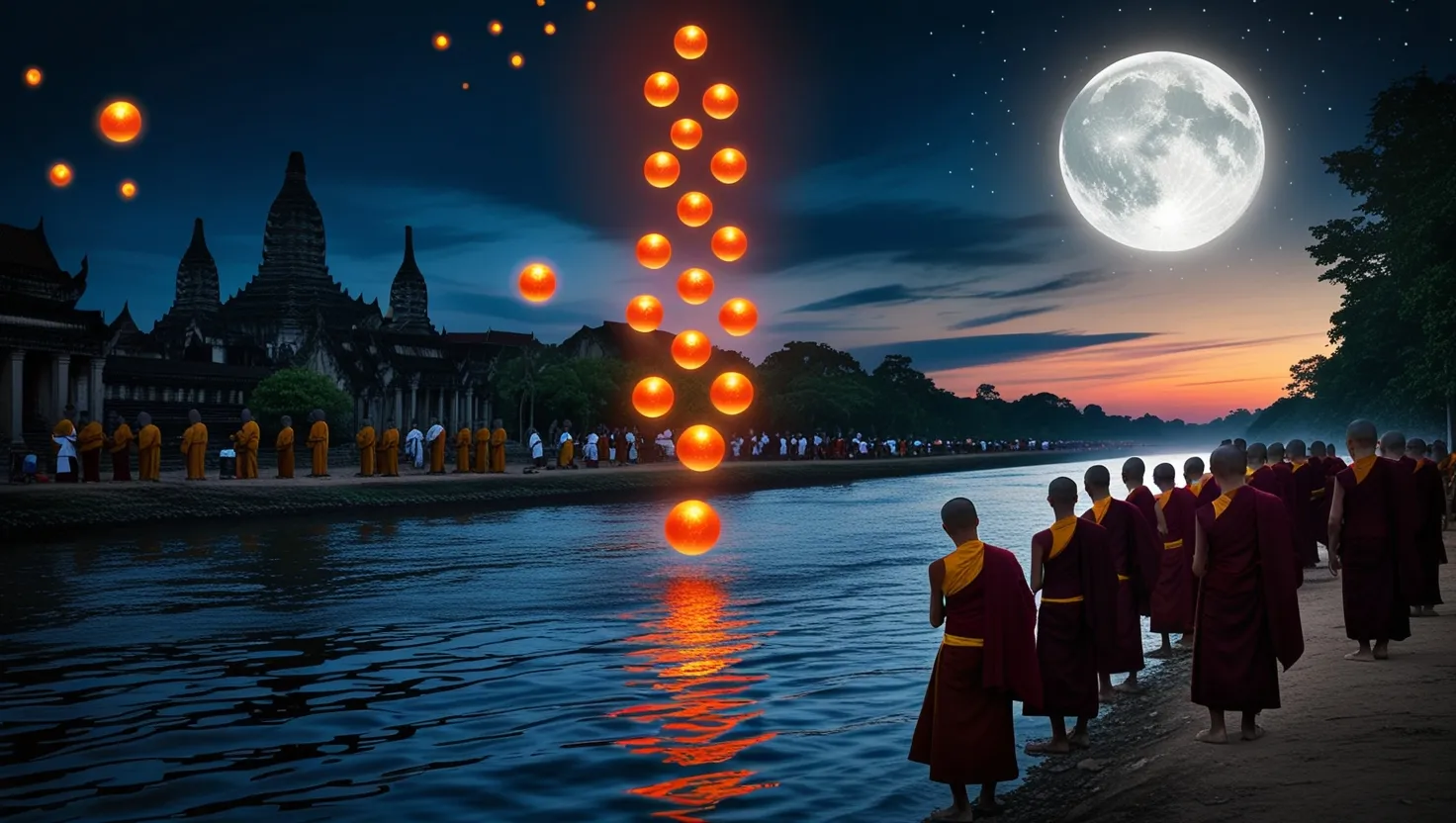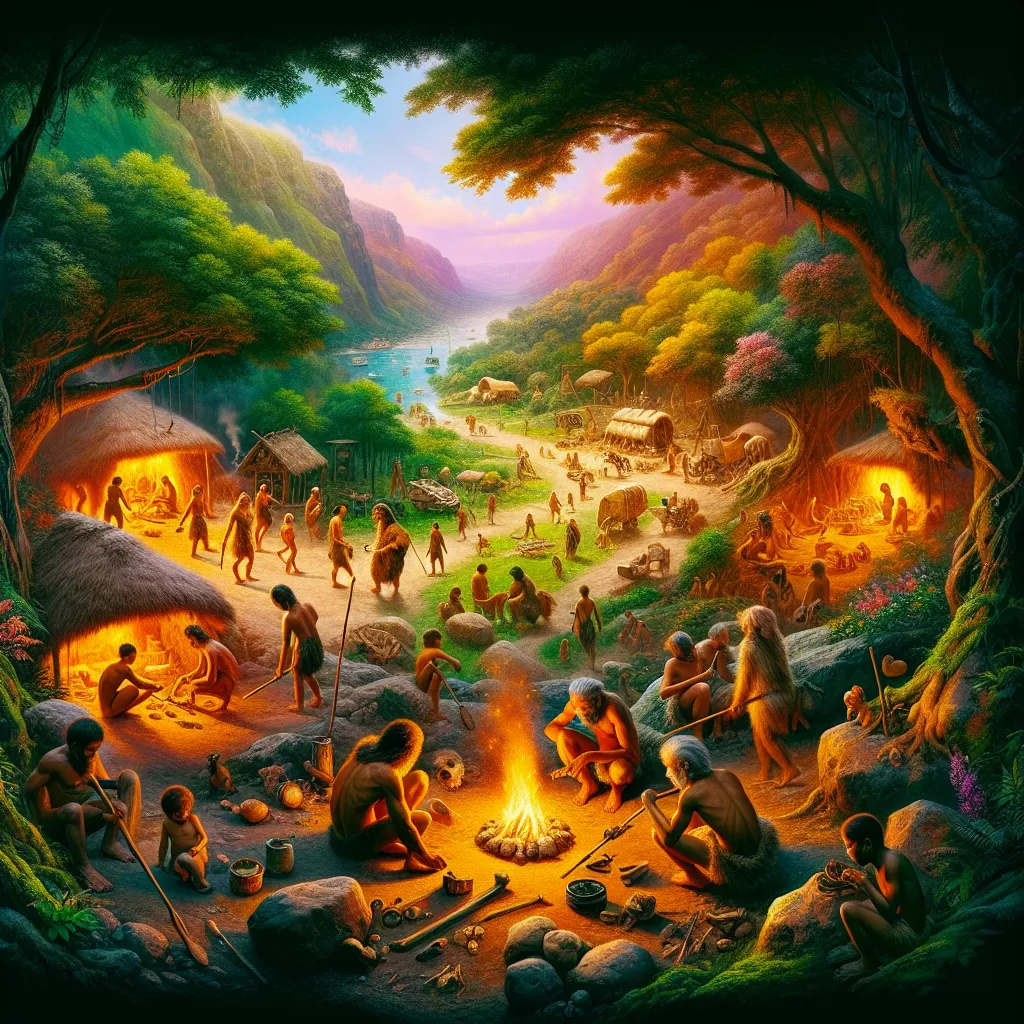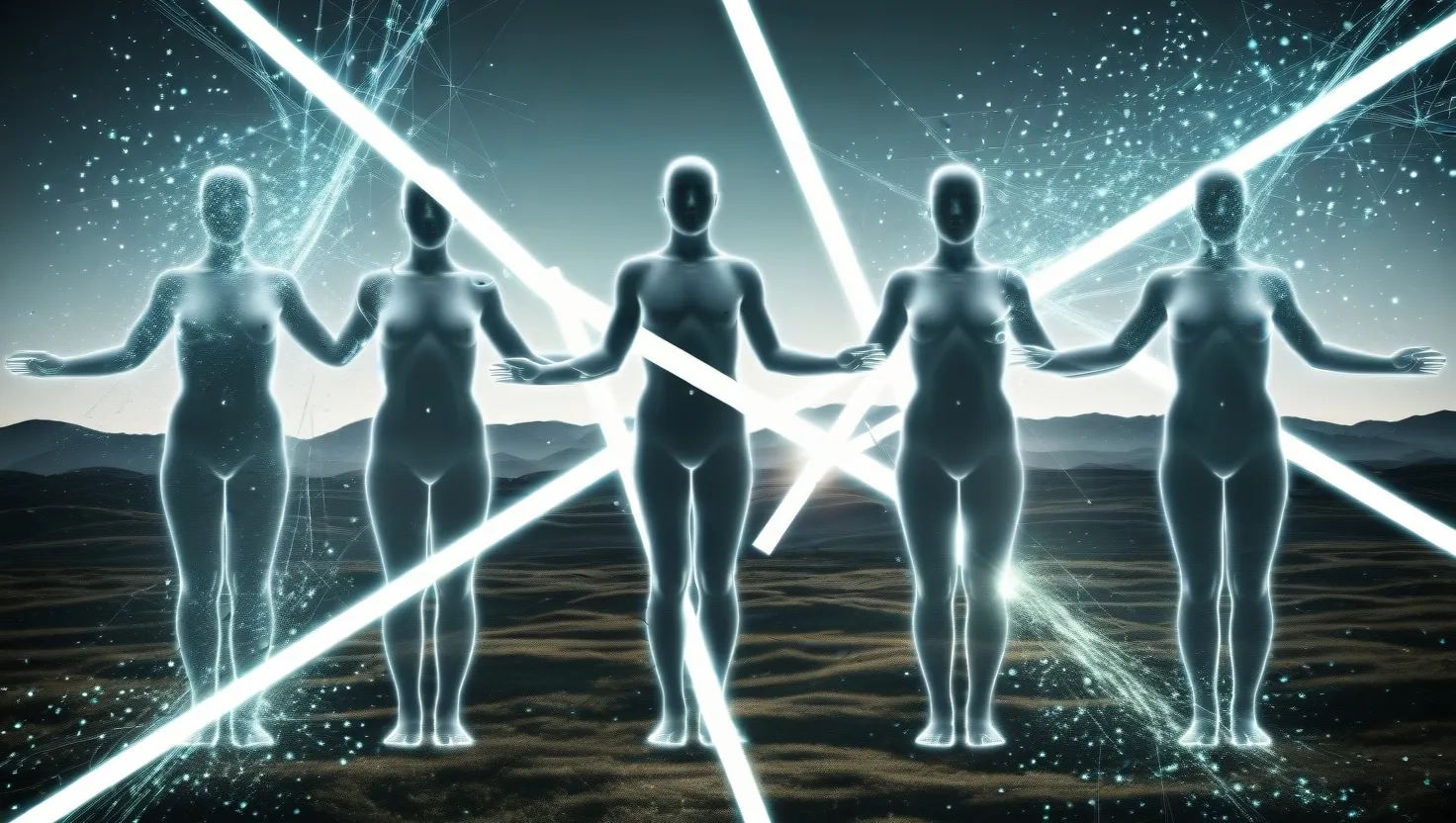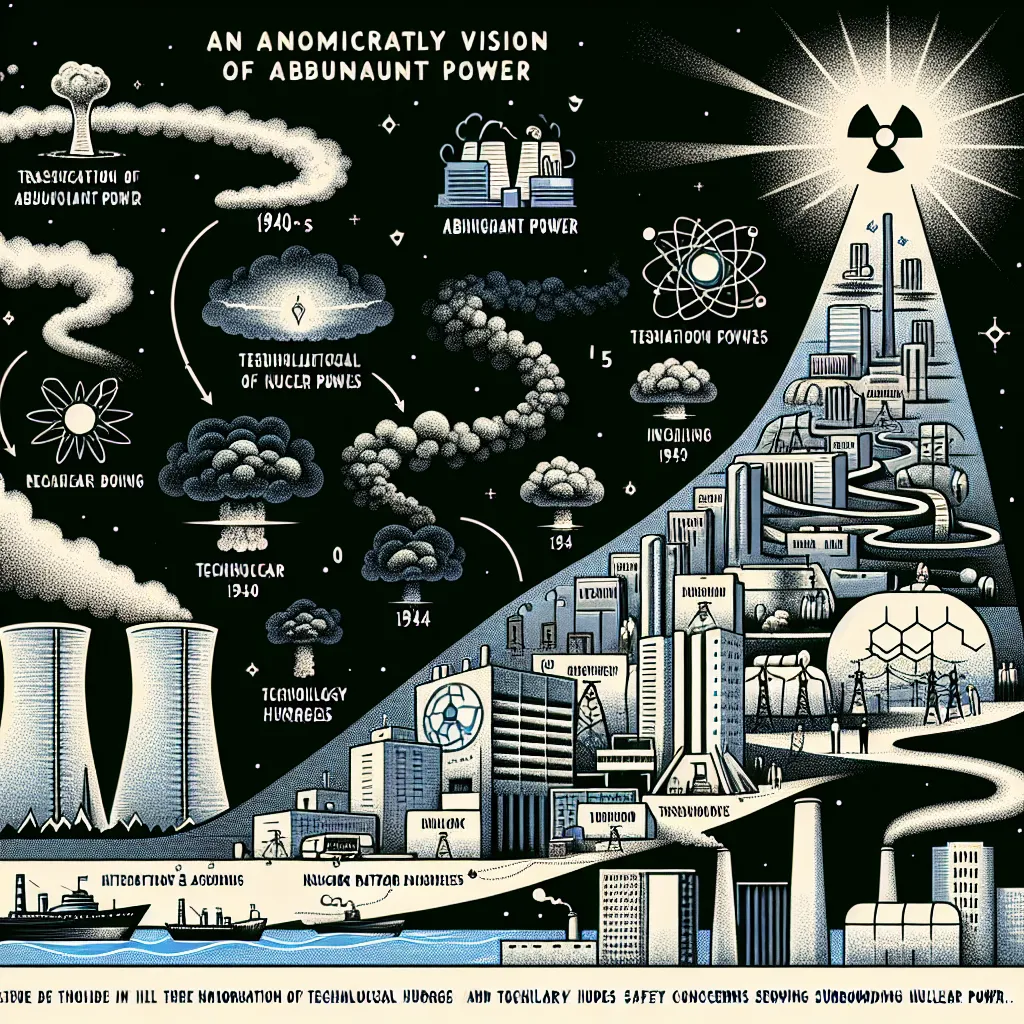If you ever find yourself along the banks of the Mekong in northeastern Thailand during the waning days of Buddhist Lent, you might hear a buzz in the dusk air—families picnic in clusters, monks chant, and all eyes find the river. Suddenly, like quiet punctuation marks in the evening, glowing orbs separate from the blackness of the water, rising with uncanny precision into the sky. These are the famed fireballs of the Mekong, and despite decades of observation, what causes them is anyone’s guess.
Having watched countless videos and spoken with those who’ve waited years to see them, I can tell you: these are no trick of the imagination. Picture spheres as small as golf balls, sometimes as large as basketballs, colored an otherworldly red-orange, gliding skyward in near silence. No whistling. No splash. No sulfur smell. They drift higher than any thrown lantern could reach, and then, just as silently, they blink out. How are these flames born, and why here, on this precise stretch of the world’s eighth-longest river?
Let’s get past popular claims first. Fireworks and party tricks quickly fail scrutiny—authorities have set up patrols during festival days, and researchers armed with sensors have yet to find evidence of tampering. The timing, always lining up with a full moon and a turning of the Buddhist calendar, might suggest a scripted event. But locals insist on generations of the same astonishing show, and there’s documentation that stretches back to before sophisticated pyrotechnics arrived. If it’s a hoax, it’s one that resists exposure with inhuman consistency.
Is it methane, sneaking from mud when the water falls after the rains? Experiments with river mud and matches simply stubbornly refuse to mimic what the Mekong offers. Methane tends to flare yellow, with noise and smoke trails, and needs a pocket of concentrated gas—fast-flowing water disperses this too quickly. Even labs seeded with organic decay can’t conjure the same spectacle: there are no silent, ruby orbs, no mass ascent across kilometers of river. Phosphine was next in line—this gas ignites on contact with air, but it breaks down in water, never gathering enough to build a luminous army of fireballs. Science chases the event and always seems two steps behind, frustrated.
Still, I find the questions multiply. Why here, not elsewhere on the Mekong or in one of Earth’s thousands of rivers with similar geology? The river’s limestone bed holds reservoirs of old organics, yes. But air sampling teams have never caught a spike in combustibles. Drones hover, thermal cameras blink, scientists wait, and… nothing until those sudden, silent lights. And let’s pause for a moment: Why should a river produce orbs, not random flickers or blazes? The geometry itself is confounding. What triggers pinpoint, vertical launches against wind or current, and why do the balls show up by the hundreds in a single night, never straying from the calendar?
If you ask monks, they’ll point to legends more ancient than the written word. The Naga, a serpent the size of a train, stirs below. Its breath brings the glowing bounty. Outsiders might smirk, but walk the riverbank in pitch-darkness, feel the communal awe, and you sense why stories retell themselves: sometimes mystery deserves reverence.
“Somewhere, something incredible is waiting to be known.” —Carl Sagan
The challenge for researchers is not the lack of effort—detailed chemical surveys have run for years. They map dissolved gases, chase weather anomalies, even monitor low-frequency seismic activity. When the fireballs dance, the charts remain stubbornly boring. The tools we reach for explain volcanoes, ball lightning, and will-o’-the-wisps, but here, none quite fit. Even bioluminescent plankton, which can create blue-green ribbons in surf, is a poor match: Naga balls glow like coals and climb, not shimmer, and their ascent ends yards above the surface, not diffused at the waterline.
I find myself vexed by the clockwork predictability. Why autumn, and why after the monsoon’s retreat? The water recedes, yes, exposing riverbanks and sometimes releasing gas, yet similar conditions in Cambodia or Vietnam yield nothing special. Is there something unique in the Mekong’s soil here, a rare isotope, or an unseen microbe?
One overlooked thread is the interplay between the river’s natural cycles and human presence. The ritual of waiting en masse along the banks—could the density of watchers somehow shape the event? Some particle physicists speculate, half in jest, that large groups of people focusing expectation could alter how energy manifests. Quantum effects seem too small for such feats, yet no conventional theory fares better. It’s a half-serious, half-fantastic notion, but sometimes the boundary between observation and participation grows fuzzy.
“Science is not only a disciple of reason, but, also, one of romance and passion.” —Stephen Hawking
Some atmospheric physicists have hunted for electrical causes—miniature plasma balls, similar to ball lightning, powered by riverine ions. Yet there are no storms, no electrical anomalies when the Naga balls ascend. No electromagnetic spike, either, according to sensitive receivers positioned nearby.
With fireballs appearing so briefly, spectroscopic analysis—our best way to break light into fingerprints—remains stubbornly incomplete. The glow’s exact color, if matched on a spectrum, might yield particular elements at play, but capturing a sample in the right millisecond has proven tough. This technical hurdle means we’re guessing, not knowing, about chemical signatures.
Let’s entertain a left-field idea: could bacterial colonies release microscopic bubbles that, due to surface tension and perhaps unseen minerals, ignite under unusual atmospheric conditions? We know some extremophile organisms can survive in, and shape, odd chemical environments. If special microbes live only in the Mekong’s sediments, and only release gases after a confluence of temperature, water level, and lunar gravity, we might have a clue. But the search for such bacteria has, so far, turned up the same mud and silt as a thousand rivers elsewhere.
At the edge of the possible, what if we’re watching an as-yet-unexplained energy release, something akin to a natural battery discharging under the right mix of water chemistry and declining pressure? Geophysicists sometimes find small voltage differences along riverbanks, but none enough to ignite air, let alone float fireballs. But then again, nature often finds a way to surprise us—what we dismiss today can become foundational with a single breakthrough.
The most persistent mysteries, I’ve learned, are often the simplest. The Mekong fireballs force us to ask: Do we know all the states that “fire” can take? Why do we expect every combustion to meet our textbook definitions? Perhaps we are working with a phenomenon so rare, its conditions repeat here and almost nowhere else, or maybe our instruments still lack the necessary sensitivity.
And what about the role of tradition? If local belief and ancient ritual coincide so perfectly with physical display, does our insistence on pure physics miss something deeper about the river’s identity? The possibility that narrative and memory themselves could shape what’s seen—while unlikely to most scientists—is a reminder: the border between event and interpretation can be thin.
“Not everything that can be counted counts, and not everything that counts can be counted.” —Albert Einstein
Each October, the spell is renewed. Maybe, as more sensitive instruments are developed—drone-mounted gas chromatographs, new generations of spectrometers, and perhaps AI-enabled pattern analyzers—we’ll catch the fireballs at the moment of genesis and decode what’s happening. Until then, we’re left (delightfully so) with one of those rare cases in modern science: a mass-witnessed, repeatable phenomenon that current models just cannot explain.
If you could stand by the river’s edge, would you trust your scientific instincts, or would you give in and offer a wish to the river serpent? I find both impulses necessary. Sometimes, nature withholds her reasons not out of malice, but simply because we haven’t yet asked the right questions—or puzzled closely enough at what’s right in front of us.
In the end, the Mekong’s fireballs remind us that Earth still holds a few cards up her sleeve. The world abounds in spectacle and in stranger riddles than we tend to admit. And as long as festivals gather on that silent river, as long as those lights rise to meet the darkness, the secret remains safe—waiting for the next curious mind to look, to wonder, and perhaps, just perhaps, to finally see.






